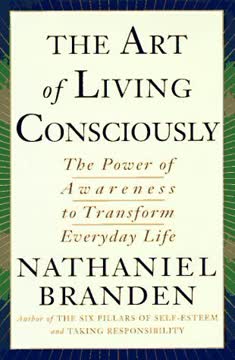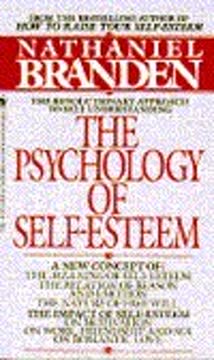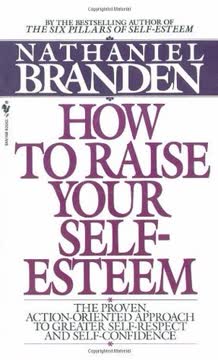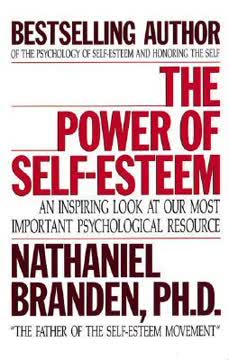Key Takeaways
1. Consciousness Requires Respect for Reality and Truth
Living consciously has its roots in respect for reality-a respect for facts and truth.
Foundation of consciousness. Living consciously begins with a fundamental respect for reality, facts, and truth. This orientation isn't innate but learned, often challenged by irrational adult behaviors during childhood. Children need a rational environment where facts are facts, questions are valued, and contradictions are minimized.
Impact of irrationality. Witnessing hypocrisy, denial, or conflicting messages can undermine a child's will to understand and trust their own perceptions. A rational universe, where truth is respected, fosters cognitive maturity and a sense of safety.
Sense of reality. Developing a "sense of reality" involves understanding that things are what they are (A is A), and actions have causes. This understanding provides security and allows us to navigate the world with assurance.
2. Living Consciously Requires Both Outer and Inner Awareness
Our inner world, too, is part of reality.
Dual awareness. Living consciously involves both awareness of the external world and self-awareness. It's about understanding our environment, our needs, motives, thoughts, emotions, and bodily feelings.
Balance is key. Neglecting either outer or inner awareness leads to ineffectiveness. Over-focusing on the external can result in alienation from one's own needs and emotions, while excessive self-absorption can blind one to the realities of the external world.
Interconnectedness. What we are blind to in the world often reflects what we are blind to in ourselves. Awareness must flow freely in both directions for effective functioning and a balanced life.
3. Reason is the Primary Tool for Navigating Reality
The quest of reason-this can hardly be stated often enough-is for the noncontradictory integration of experience.
Reason as a faculty. Reason is the faculty that grasps relationships, makes distinctions, and seeks connections. It involves induction, deduction, and relating new knowledge to existing contexts, guided by the law of non-contradiction.
Integration is central. Integration is key to both the life process and the operation of the mind. Reason is the instrument of awareness raised to the conceptual level, allowing us to understand and adapt to reality.
Self-correction. Reason offers the possibility of self-correction through openness to evidence, willingness to correct errors, and continuous learning. It is the opposite of mental rigidity and defensiveness.
4. Choice and Responsibility are Inseparable from Consciousness
The ability to focus our mind or not to, to think or not to, to strive for awareness or not to, to face reality or not to, is our free will.
Volitional consciousness. We have the freedom to focus our minds, think, strive for clarity, and examine facts, or to avoid these actions. This ability to regulate our mental activity is our free will.
Consequences of choice. The choices we make regarding consciousness have real consequences. Choosing to think strengthens our minds and increases control over our lives, while avoiding thought leads to confusion and ineffectiveness.
Responsibility. Living consciously means taking responsibility for generating a level of awareness appropriate to the context. It involves giving our activities the best consciousness we are capable of.
5. Context Determines the Appropriate Level of Consciousness
Context determines what mind-state is appropriate.
Congruence is key. The appropriate mind-state depends on the context, including our goals and purposes. There needs to be congruence between what we are physically doing, what our goal is, and our mind-state.
Selective awareness. Consciousness is necessarily selective. The choice to focus in one direction is, in effect, the choice not to focus in other directions.
Automaticity. We wisely and properly leave much unconscious. It is in the nature of human learning that we automate new knowledge and skills, such as speaking a language or driving an automobile, so that they do not continue to require of us the level of explicit awareness necessary during the learning stage.
6. Avoidance Strategies Diminish Consciousness and Well-being
Psychologically, what is being avoided in all such cases is consciousness. Existentially, what is being avoided is reality.
Motives for avoidance. Common motives for avoiding consciousness include fatigue, laziness, fear, pain, or the desire to indulge inappropriate wishes. These motives can be dangerous and self-destructive.
Strategies of avoidance. Common strategies include giving up the effort to direct awareness, surrendering to emotions, and switching one's mind to irrelevant issues. These tactics serve to hold reality at bay.
Consequences of avoidance. Persistently avoiding consciousness leads to feelings of incompetence, underdeveloped self-esteem, and a disconnect from reality. It undermines our ability to make effective choices and achieve our goals.
7. A Conscious Life Entails Mindfulness in Everyday Actions
If we are present to what we are doing, our consciousness is open to receive.
Being present. Mindfulness involves being present to what we are doing, acting in a mind-state appropriate to being effective, and being alert to incoming information. It means acting in the moment but not trapped in the moment.
Responsibility toward reality. Implicit in living consciously is a policy of living responsibly toward reality. This involves confronting facts, even when they are discomfiting, and acting in accordance with our knowledge.
Intelligence is irrelevant. Living consciously is applicable on any level of intelligence. It means seeking to be aware of everything that bears on our actions, purposes, values, and goals to the best of our ability.
8. Self-Awareness is Key to Personal Growth and Effective Living
Often, a flight from reality is a flight from the reality of our inner state.
Importance of self-awareness. Self-awareness involves understanding our inner world of needs, motives, thoughts, mental states, emotions, and bodily feelings. It is essential for effective functioning and personal growth.
Confronting emotions. Often, a flight from reality is a flight from the reality of our inner state. Learning to manage avoidance impulses and confront difficult emotions is crucial for living consciously.
Self-acceptance. Self-acceptance is the foundation of growth and change. It involves owning and accepting who we are, making peace with our thoughts, emotions, and actions, and opening ourselves to self-examination.
9. Consciousness Strengthens Self-Esteem
We undermine our self-esteem when we persist in our contradictions, because at a deeper level we know what we are doing.
Reciprocal relationship. A reciprocal relationship exists between living consciously and self-esteem. Just as living consciously strengthens self-esteem, so self-esteem inspires living consciously.
Self-esteem defined. Self-esteem is the experience of being competent to cope with the basic challenges of life and of being worthy of happiness. It is confidence in the efficacy of our mind.
Undermining self-esteem. We undermine our self-esteem when we persist in our contradictions, because at a deeper level we know what we are doing. Evasion may deceive the conscious mind; it does not deceive the subconscious mind.
10. Living Consciously Embraces This-Worldly Spirituality
When we live consciously, we anchor spirituality in the challenges and opportunities of our uniquely human condition.
This-worldly focus. Our discussion of consciousness is entirely this-worldly, directed at the needs and possibilities of earthly existence. It is about embracing life, not turning our back on it.
Life is growth. In doing so, we are led to embrace the continuing evolution of consciousness itself-because life is growth, motion, expansion, unfolding, a dynamic thrust forever transcending yesterday to reach tomorrow.
Mindfulness. Living consciously entails being in the present without losing the wider context. The context is there as background, and what we are doing is foreground. Then we are in the moment but not trapped in the moment.
11. Mysticism's Claims Lack Rational Grounding
The crime against the child's body was less than the crime against her mind.
Mysticism defined. Mysticism is the claim that there are aspects of existence that can be known by means of a unique cognitive faculty whose judgments are above the authority of sensory observation or reason.
Contradictions. Mysticism often involves embracing contradictions and denying the validity of reason. This undermines the possibility of knowledge and leads to logical incoherence.
Lack of evidence. The claims of mysticism lack empirical support and often rely on subjective experiences that cannot be verified or replicated. It is not a path to knowledge but a path to self-deception.
12. Enlightened Selfishness is Superior to Selflessness
People who are governed by a respect for reality lead lives that work better than those of people who place wishes above reason.
Selflessness defined. In an ethical context, "selflessness" means devoid of, or untainted by, self-interest. It is often upheld as the ideal of morality and spirituality.
Rational self-interest. Rational self-interest involves pursuing one's values, acting on one's judgment, and living with integrity. It is not about sacrificing others to self but about achieving one's goals in a way that is consistent with reality.
Consequences of selflessness. The doctrine of selflessness can lead to self-sacrifice, the suppression of individual needs and desires, and the erosion of personal well-being. It is a dangerous and self-destructive philosophy.
Last updated:
FAQ
What’s The Art of Living Consciously by Nathaniel Branden about?
- Core theme of consciousness: The book explores what it means to live consciously, emphasizing awareness as a way of being and a source of power and liberation.
- Application to daily life: It examines how consciousness transforms areas like emotions, relationships, parenting, work, values, self-esteem, and spirituality.
- Philosophical foundation: Branden stresses respect for reality, facts, and truth as the basis for rational thought and effective living.
Why should I read The Art of Living Consciously by Nathaniel Branden?
- Empowerment through awareness: The book demonstrates that consciousness is a tool for liberation, better decision-making, and emotional health.
- Practical guidance: It offers actionable methods to raise awareness, manage avoidance, and take responsibility for choices, leading to improved self-esteem and effectiveness.
- Broad relevance: The framework applies to relationships, work, parenting, and personal growth, making it valuable for anyone seeking a more fulfilling life.
What are the key takeaways from The Art of Living Consciously by Nathaniel Branden?
- Consciousness is volitional: Living consciously is a deliberate, ongoing practice essential for self-esteem, emotional health, and effective action.
- Integration of awareness: Awareness of body, emotions, needs, and actions leads to personal growth and integration.
- Spirituality redefined: Spirituality is best understood as the development of consciousness, not self-denial or mystical illusions.
What are the best quotes from The Art of Living Consciously and what do they mean?
- "If morality means anything, it means first and foremost the commitment to be aware. Whatever forbids awareness subverts a moral existence." This highlights the ethical importance of consciousness.
- "Living consciously means paying attention to what needs to be paid attention to." It underscores the practical essence of conscious living.
- "Honoring one's true wants can be not an act of self-indulgence but an act of courage." This reframes self-awareness and authenticity as acts of bravery, not selfishness.
- "If we are willing to stay fully present to our emotions without denial or disowning, the result typically is not the collapse of reason but the emergence of more lucid awareness." This quote emphasizes the integration of emotion and reason.
How does Nathaniel Branden define “living consciously” in The Art of Living Consciously?
- Active mental engagement: Living consciously means being mentally active, aware of what one is doing while doing it, and not living on autopilot.
- Awareness of inner and outer worlds: It involves paying attention to both external reality and internal experiences—thoughts, emotions, needs, and bodily sensations.
- Volitional and contextual: Consciousness is a matter of degree, and we choose when to turn it “brighter or dimmer” depending on the situation.
What are the first principles of living consciously according to Nathaniel Branden?
- Respect for reality: Treating facts as facts and honoring the laws of identity and noncontradiction are foundational.
- Integration of awareness: Consciousness requires integrating awareness of both the external environment and one’s inner world.
- Reason as a guide: Reason is the faculty that integrates experience, avoids contradictions, and seeks coherence in thought and action.
What are the main obstacles to living consciously in The Art of Living Consciously?
- Avoidance and denial: Fear, pain, laziness, or the desire to indulge inappropriate wishes often lead to unconscious, automatic living.
- Contradictory beliefs: Evasion of facts or holding contradictory beliefs undermines consciousness and leads to confusion.
- Emotional avoidance: Escaping into or away from emotions sabotages rational thought and effective living.
How does The Art of Living Consciously relate consciousness to self-esteem?
- Reciprocal relationship: Living consciously strengthens self-esteem, while higher self-esteem inspires greater consciousness and responsibility.
- Foundation of self-worth: Consciousness is the first of the six pillars of self-esteem, making it essential for genuine confidence and integrity.
- Self-acceptance and growth: Honest awareness and acceptance of oneself are foundational for personal growth and change.
What is the sentence-completion technique in The Art of Living Consciously and how does it help?
- Technique explained: Sentence-completion involves writing stems and rapidly generating endings to access subconscious thoughts and feelings.
- Applications: The book provides stems for body awareness, needs, emotions, relationships, fears, values, and resistance to consciousness.
- Benefits: This method uncovers hidden blocks, promotes self-discovery, and facilitates behavioral change and emotional unblocking.
How does The Art of Living Consciously explain the relationship between consciousness and emotions?
- Emotions as responses: Emotions reflect subconscious appraisals and carry impulses to act, but action and emotion are distinct.
- Repression and body connection: Repressed emotions manifest as bodily tension, blocking consciousness and clear thinking.
- Nonjudgmental observation: Sustained, accepting self-observation allows for full emotional experience, leading to healing and integration.
How does Nathaniel Branden address spirituality and consciousness in The Art of Living Consciously?
- This-worldly spirituality: Spirituality is defined as the development of consciousness, not as supernatural or mystical detachment.
- Critique of mysticism: The book challenges mystical claims of ego dissolution and the illusion of separateness, advocating for rational self-awareness.
- Ethics of self-interest: Branden argues for enlightened self-interest as a moral approach consistent with conscious living.
How does living consciously affect relationships and parenting according to The Art of Living Consciously?
- Conscious relationships: Awareness in interactions fosters respect, understanding, and intimacy, while unconsciousness leads to alienation and conflict.
- Love and intimacy: Loving consciously means appreciating the real person and responding thoughtfully rather than reactively.
- Conscious parenting: It involves modeling values, encouraging independent thinking, and being aware of the messages sent to children.
Review Summary
The Art of Living Consciously receives mostly positive reviews, praised for its insights on self-awareness and practical exercises like sentence completion. Readers appreciate Branden's clear definitions and focus on consciousness. Some find it life-changing, while others familiar with his work see it as a refresher. The book's emphasis on self-esteem and rational thinking resonates with many. However, some criticize the final chapter's stance on spirituality and meditation, and a few readers find the writing style verbose or ideologically biased.
Similar Books
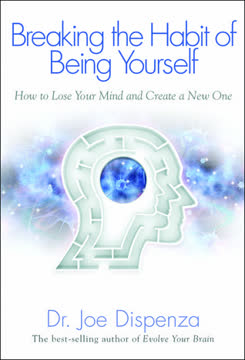
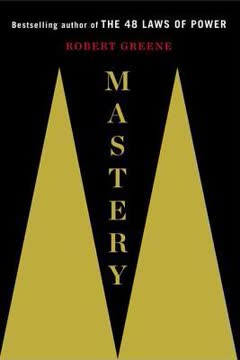


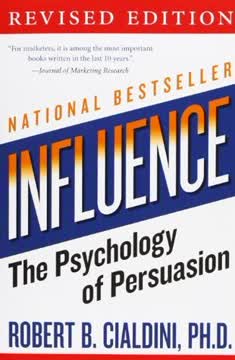
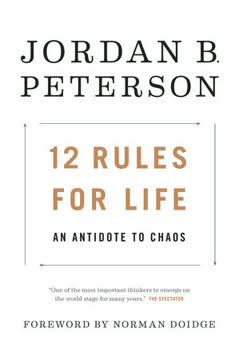
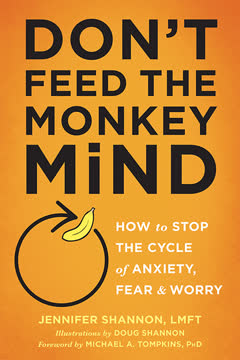
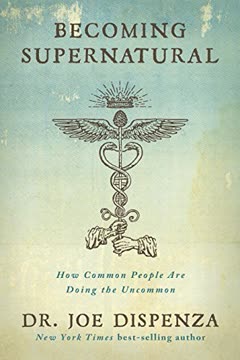

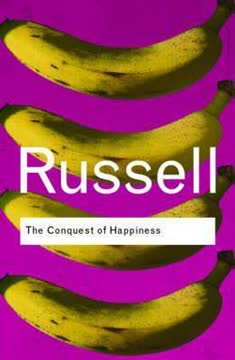
Download PDF
Download EPUB
.epub digital book format is ideal for reading ebooks on phones, tablets, and e-readers.
